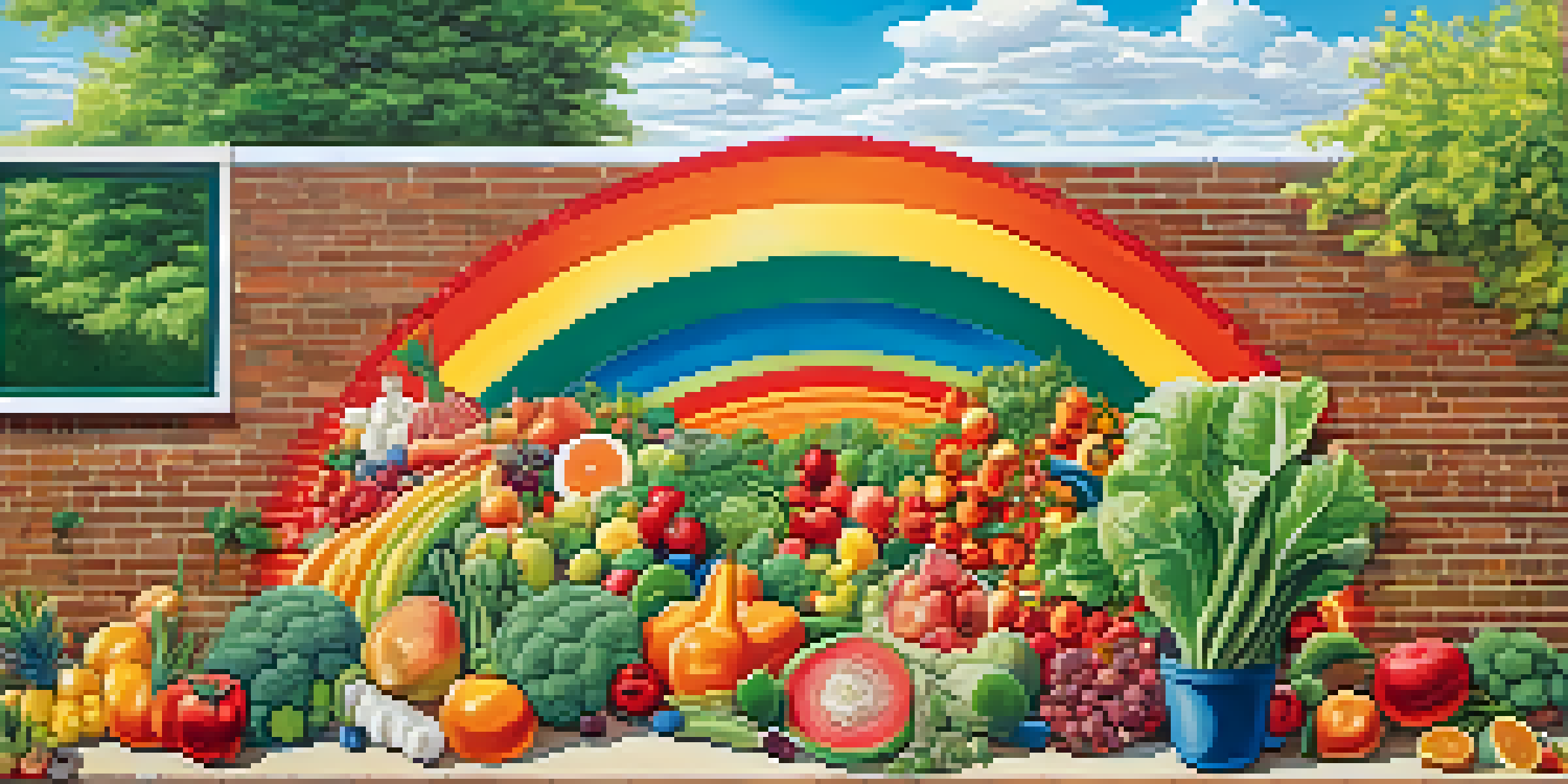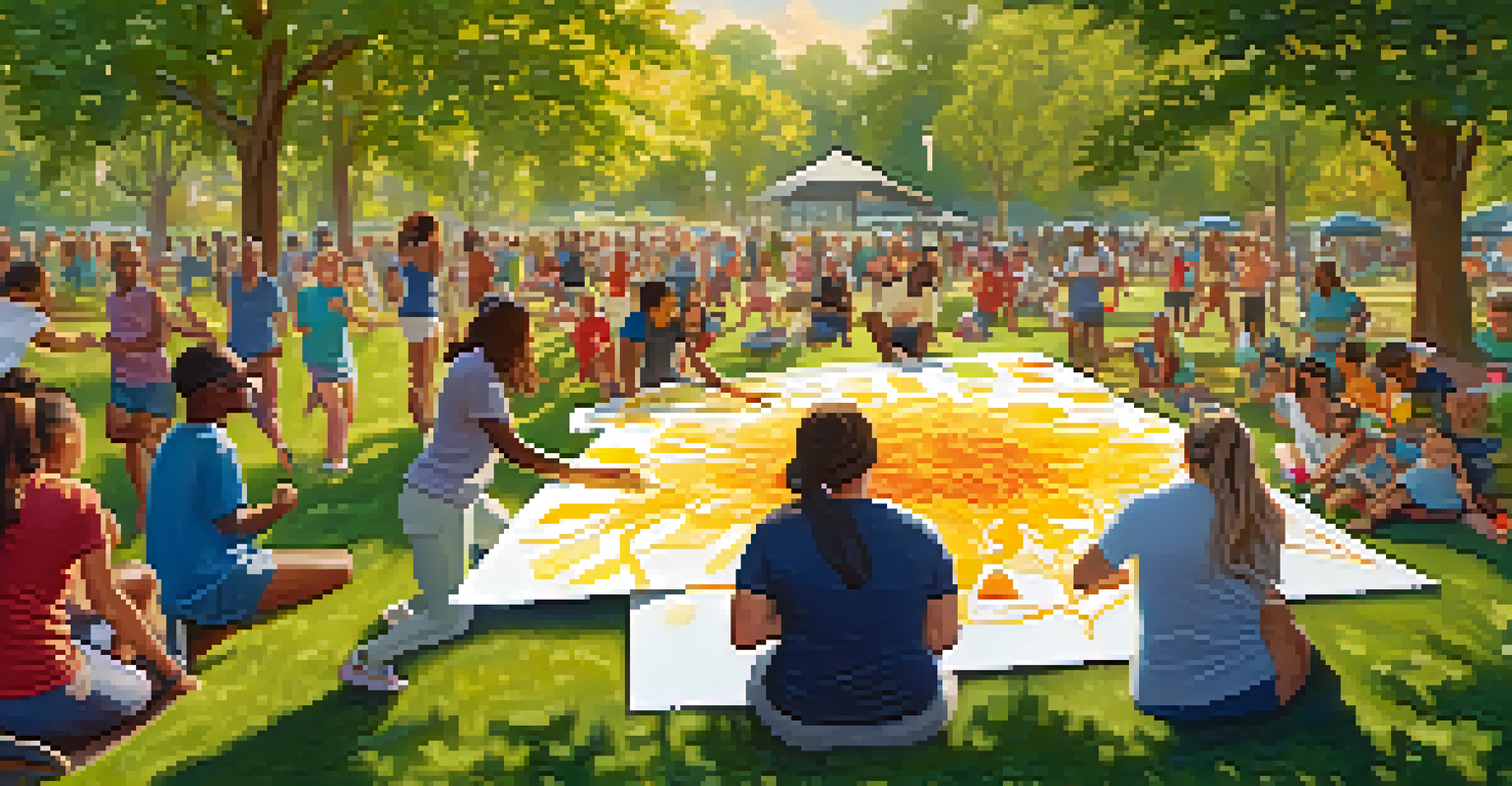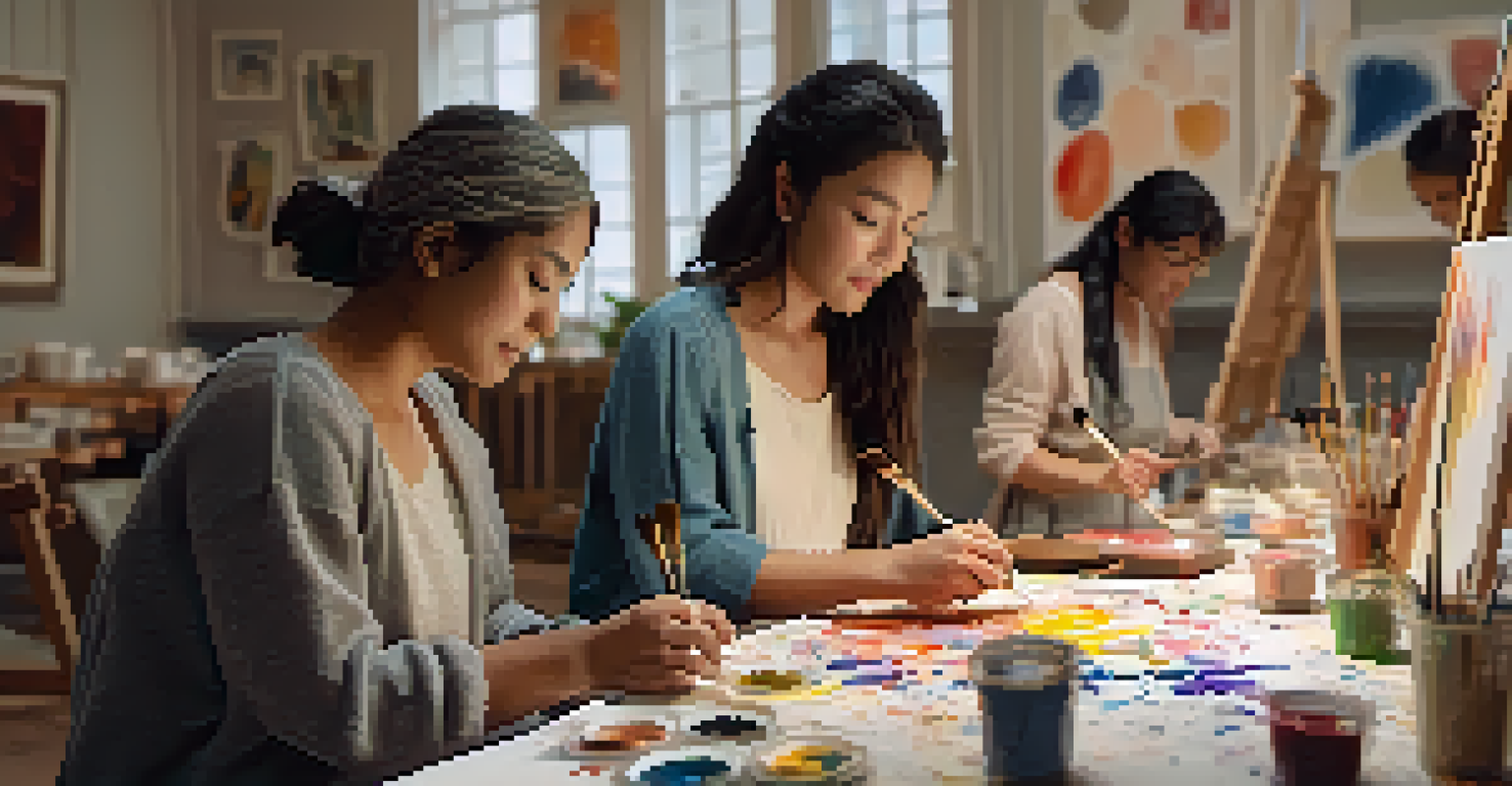Artistic Interventions: Addressing Public Health Crises

Understanding Artistic Interventions in Health Contexts
Artistic interventions are creative approaches that leverage the power of art to address various issues, including public health crises. These interventions can take many forms, such as murals, performances, or community art projects, all designed to raise awareness and inspire action. By combining artistic expression with health messaging, these initiatives can resonate deeply within communities, making complex health topics more relatable and engaging.
Art is a way of recognizing ourselves and putting ourselves in the world. It’s a way of connecting in an emotional way, and that can be healing.
For instance, consider the impact of street art during the COVID-19 pandemic. Artists created powerful visuals that not only conveyed health messages but also captured the emotional weight of the moment. These artworks served as a reminder of the collective struggle while encouraging safe behaviors, illustrating how art can foster community solidarity and resilience.
Ultimately, understanding artistic interventions involves recognizing their potential to bridge gaps between health information and public perception. By framing health issues in a visually or emotionally compelling way, art can stimulate conversations that might otherwise be difficult to start.
The Role of Community Engagement in Art-Based Health Initiatives
Community engagement is crucial in the success of artistic interventions aimed at public health. When community members are actively involved in the creation process, the resulting art often reflects their unique experiences and concerns, making it more impactful. This collaborative approach not only empowers individuals but also fosters a sense of ownership over the health messages being communicated.

For example, in a neighborhood grappling with high rates of obesity, a local artist might work with residents to create a mural that celebrates healthy lifestyles. By incorporating local stories and symbols, the artwork becomes a source of pride and motivation for community members to adopt healthier habits. This type of engagement ensures that the art resonates on a personal level, increasing the likelihood of behavioral change.
Art Enhances Health Awareness
Artistic interventions effectively communicate health messages, making complex topics more relatable and engaging for communities.
Moreover, community-driven art projects can serve as a platform for dialogue, allowing residents to voice their health-related challenges and aspirations. This exchange not only elevates the art but also cultivates a supportive environment where individuals feel heard and valued.
Art as a Tool for Mental Health Awareness and Support
Artistic interventions are particularly effective in addressing mental health issues, often breaking down stigma and encouraging open conversations. Through various forms of art, individuals can express their emotions and experiences, creating a safe space for others to do the same. Art therapy, for instance, has been shown to help individuals process trauma and navigate their mental health journeys.
Art has the power to transform, to illuminate, to educate, and to motivate.
A poignant example of this is the use of storytelling through visual art. Projects that invite participants to share their mental health experiences visually can foster empathy and understanding within the community. When people see their struggles reflected in art, it can validate their feelings and inspire others to seek help.
Additionally, these artistic expressions can highlight the importance of mental health resources and support systems. By integrating mental health messaging into the artwork, communities can better inform individuals about available services, making it easier for them to reach out for help when needed.
Artistic Interventions in Response to Substance Abuse Issues
Substance abuse is another critical public health crisis that can benefit from artistic interventions. Artists can create works that reflect the struggles and stories of those affected by addiction, helping to humanize a complex issue often shrouded in stigma. By sharing these narratives through art, communities can foster understanding and compassion towards individuals battling addiction.
For instance, a community art project might invite individuals in recovery to showcase their journeys through visual mediums. This not only empowers them but also educates the public about the realities of addiction, emphasizing that recovery is possible and deserving of support. Such projects can spark conversations about substance abuse, encouraging community members to engage in prevention and support efforts.
Community Involvement is Key
Engaging community members in the creation of art ensures that the resulting projects reflect their unique experiences and foster ownership over health messages.
Furthermore, these artistic expressions can serve as healing tools for both the artists and the audience. When people connect with the narratives portrayed in the art, it can create a sense of solidarity and hope, reinforcing the notion that they are not alone in their struggles.
Using Art to Promote Healthy Lifestyles and Prevention
Artistic interventions can play a vital role in promoting healthy lifestyles and disease prevention. Creative campaigns that incorporate art can effectively communicate health messages in a visually appealing way, making them more memorable and engaging for the audience. For example, vibrant public murals depicting fruits and vegetables can encourage healthier eating habits in communities.
Moreover, art can be a powerful medium for illustrating the benefits of physical activity. Dance performances or interactive art installations that invite participation can inspire individuals to get moving and lead more active lifestyles. By making health promotion fun and engaging, these interventions can increase community participation and investment in their well-being.
Additionally, integrating art into health education programs can enhance learning experiences. When information is presented in an artistic format, it can facilitate better understanding and retention, making it easier for individuals to adopt healthier behaviors.
The Intersection of Art, Culture, and Public Health
Artistic interventions often intersect with cultural contexts, making them particularly effective in addressing public health challenges. By incorporating cultural elements into art projects, communities can ensure that health messages resonate with their values and traditions. This culturally sensitive approach fosters a deeper connection between the art and the audience, increasing its impact.
For example, artists might collaborate with local cultural leaders to create works that reflect traditional health practices or beliefs. By honoring these cultural narratives, the artwork not only educates but also reinforces the community's identity and heritage, making health promotion feel more relevant and accessible.
Art Supports Mental Health Dialogues
Artistic expressions can break down stigma around mental health, encouraging open conversations and highlighting available support resources.
Furthermore, recognizing the cultural dimensions of health can lead to more effective interventions. When art reflects the diverse experiences of a community, it can challenge stereotypes and encourage inclusivity, paving the way for more comprehensive public health strategies.
Challenges and Considerations in Artistic Public Health Initiatives
While artistic interventions hold immense potential for addressing public health crises, they are not without challenges. One significant hurdle is securing funding and resources to support these projects. Many artists and organizations rely on grants and community support, which can be unpredictable and competitive. Ensuring sustainable funding is crucial for the long-term success of these initiatives.
Additionally, measuring the impact of artistic interventions can be complex. Traditional health metrics may not adequately capture the nuances of how art influences behavior and community engagement. Developing innovative evaluation methods that consider both qualitative and quantitative data can help demonstrate the effectiveness of these interventions.

Finally, navigating community dynamics is essential for successful implementation. Artists and health organizations must work collaboratively and respectfully, ensuring that the voices of community members are prioritized throughout the process. Building trust and fostering open communication can help overcome potential resistance and enhance the overall effectiveness of the artistic intervention.